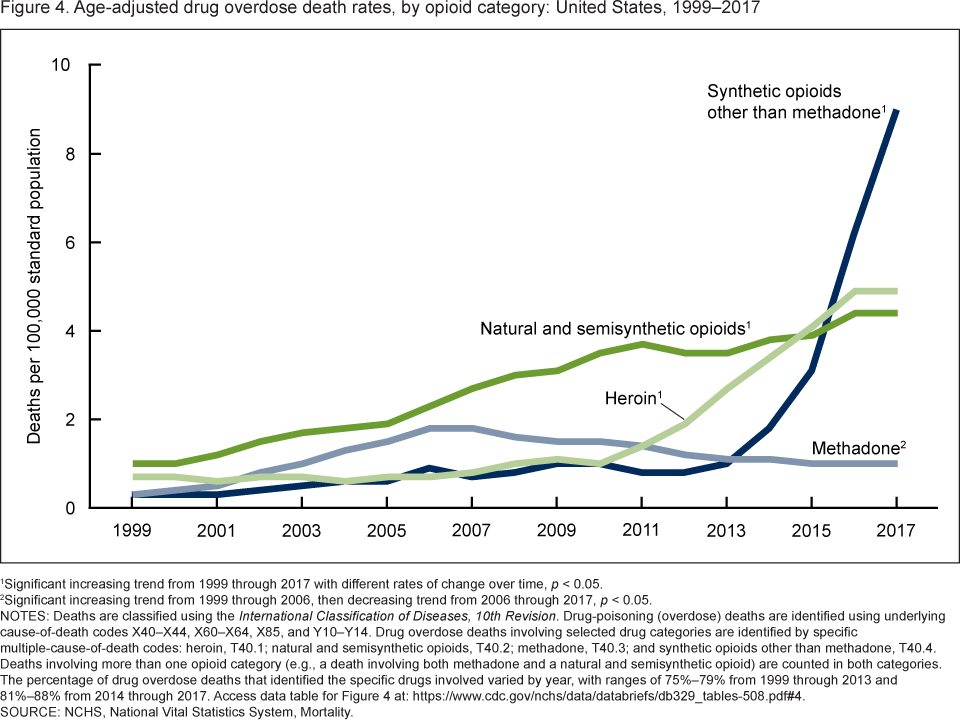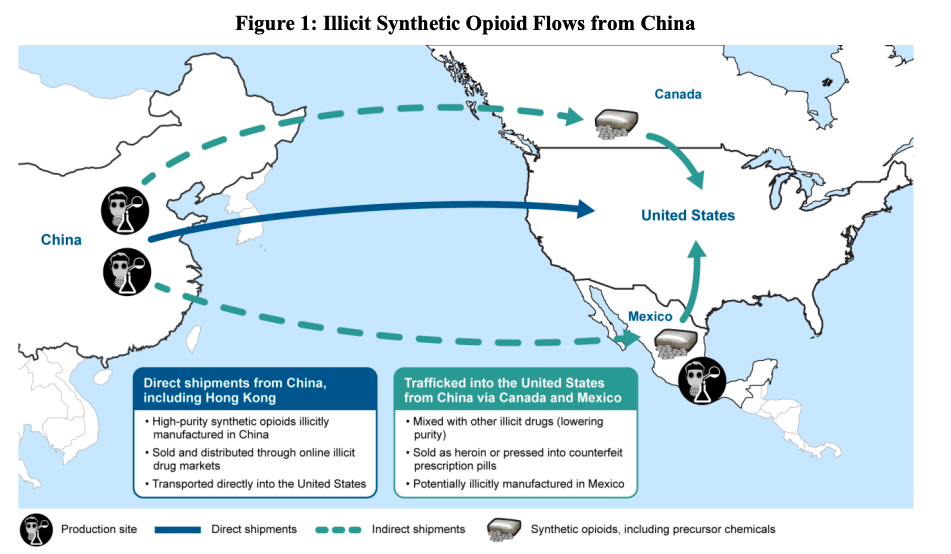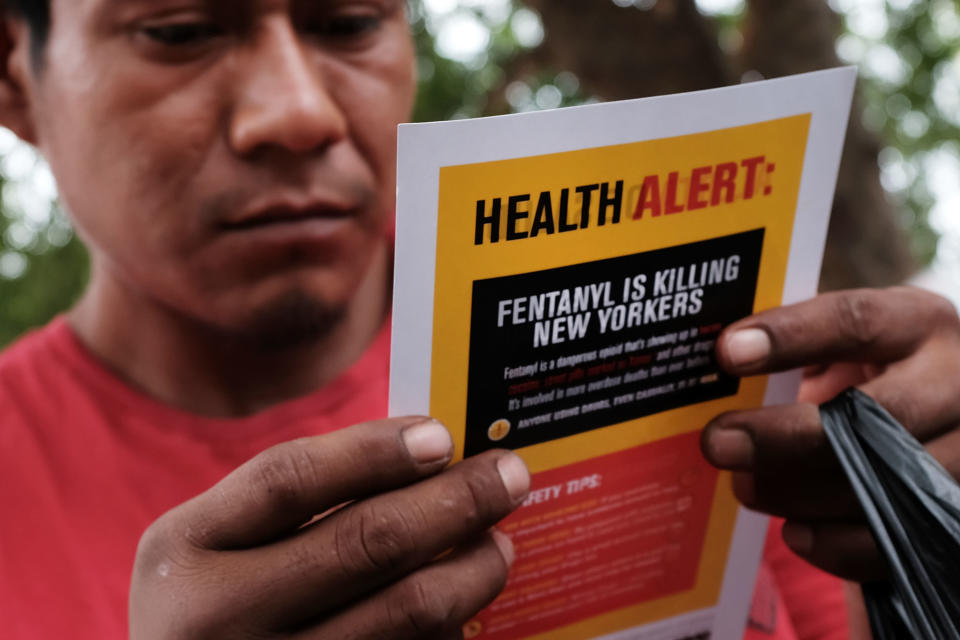Former DEA agent on fentanyl: ‘By far, the worst drug I’ve ever seen'
Although opioids have received significant attention over the last year, fentanyl, a synthetic opioid, is becoming a major player in the illicit drug market.
So much so that the the Pentagon and Department of Homeland Security reportedly considered classifying fentanyl as a weapon of mass destruction.
“You’ve got to remember, it’s 40 to 50 times stronger than regular street heroin,” Jack Riley, former principal deputy administrator for the Drug Enforcement Agency (DEA), told Yahoo Finance. “This is, by far, the worst drug I’ve ever seen.”

‘A whole different crew of users’
Fentanyl is 50 to 100 times more potent than morphine. And according to the National Institute of Health (NIH), “synthetic opioids, including fentanyl, are now the most common drugs involved in drug overdose deaths in the United States.” In 2017, 59% of opioid-related deaths involved fentanyl, a notable increase from the 14.3% in 2010.
“You have people who are addicted to prescription drugs, either from legitimate prescriptions or doctors prescribing, or they get it on the street, or they steal it out of their grandmother’s medicine cabinet,” Riley said. “It’s an opioid-based addiction. And when prescription drugs become too expensive or hard to get, the next step based off the opioid addiction is to go down and use current-day heroin.”
The 2019 UN World Drug Report report noted that North America is experiencing “a rising number of overdose deaths resulting from the use of opioids.” There was a 13% increase in the number of deaths in 2017 from 2016, and “largely attributed” to synthetic opioids like fentanyl. Additionally, “the number of new psychoactive substances that are synthetic opioids, mostly fentanyl analogues, reported on the market has been rising at an unprecedented rate.” So have overdose rates.

“Now the difference here is heroin of old was really confined to a smaller user group, but today’s heroin is much higher proof, it’s cheaper, and for a lot of people is snorted and smoked, much like cocaine,” Riley explained. “The old fear of AIDS or hepatitis because of a needle really has disappeared, and that’s attracted a whole different crew of users.”
‘We need to work with’ China
North America is the main market for fentanyl, according to the 2019 World Drug Report from UNODC. And the global market is growing: According to the report, “while just four countries reported fentanyl seizures to UNODC in 2013, 12 countries did so in 2016 and 16 countries in 2017.”
One of the biggest sources of fentanyl making its way through the U.S. is China. According to the U.S.-China Economic and Security Review Commission (USCC), China is the largest source of not only illicit fentanyl, but also fentanyl-like substances in the U.S.

Mike Vigil, former chief of operations for the DEA, told Yahoo Finance that the best way to curb this flow of drugs is by working with the countries it’s originating from.
“The fact of the matter is that we need to work with [China], and they are going to need help with a lot of resources in terms of monitoring the thousands of laboratories that are pushing that fentanyl and what have you,” Vigil said. “We really need to monitor these countries such as Germany, India, China, in terms of movement of precursor chemicals into the hands of criminal or transnational organized crime networks that will use them to produce fentanyl and other synthetic opioids.”

‘It is an impossibility of physics’
In terms of dealing with the existing issue, there are myths about how to handle fentanyl exposure.
Dr. Ryan Marino, a medical toxicologist and assistant professor of emergency medicine at Case Western Reserve University School of Medicine, detailed one of these myths: that people cannot overdose by touching or inhaling the drug in the air.
“Potent synthetic opioids pose a serious health concern for our citizens,” Marino told Yahoo Finance. “The risk is not to people who are in law enforcement or medical responders. It is only to people who are consuming drugs.”
This is supported by medical research. The American College of Medical Toxicology and the American Academy of Clinical Toxicology stated in December 2017: “To date, we have not seen reports of emergency responders developing signs or symptoms consistent with opioid toxicity from incidental contact with opioids. Incidental dermal absorption is unlikely to cause opioid toxicity.”

Marino asserted that it was important to dispel that misinformation — which he said began approximately two years ago — so that the epidemic can be better understood and treated.
“The idea that law enforcement and first responders might somehow overdose through skin or inhalation contact with someone who has used drugs has led to direct harms to people who have truly overdosed, who are not resuscitated appropriately,” he said. “I have seen my own patients suffer directly from these myths. There are no confirmed cases of ‘passive exposure’ leading to toxicity that can be confirmed by a medical professional or toxicologic testing, and it is an impossibility of physics.”
Adriana is an associate editor for Yahoo Finance. Follow her on Twitter @adrianambells.
READ MORE:
'They thought they were buying heroin': How fentanyl invaded the U.S.
Fed Chair Powell: Opioid epidemic is 'a national crisis' hitting the economy
Pharma CEO: 'This opioid crisis has become a fentanyl crisis'
'Just a piece': The U.S. opioid epidemic is costing a fortune in lost tax revenue
Read the latest financial and business news from Yahoo Finance
Follow Yahoo Finance on Twitter, Facebook, Instagram, Flipboard, SmartNews, LinkedIn, YouTube, and reddit.
